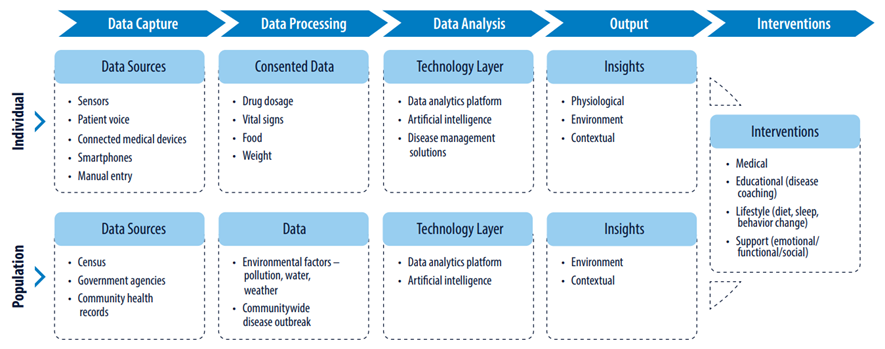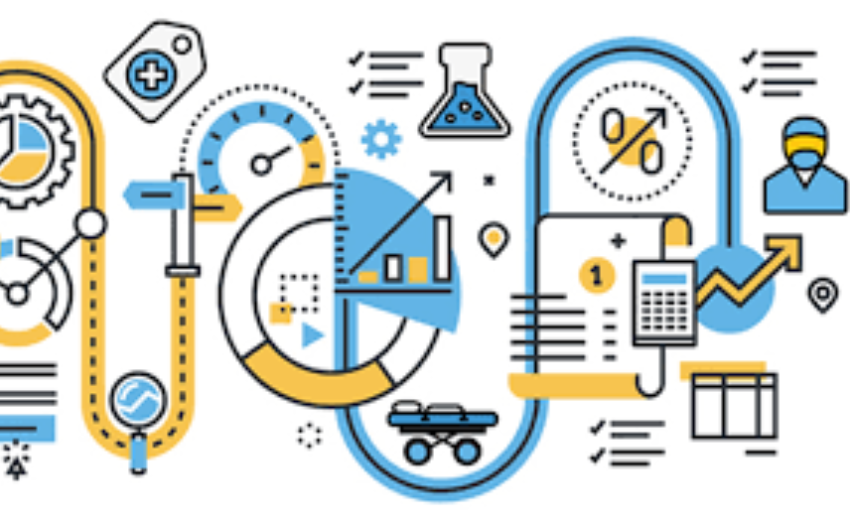This is an excerpt of the publication “Data-Driven Health Care (DDHC)”, with the title above, focusing on the topic in question.
Infosys
Venky Ananth, and Lakshmi Prabha M
2019
Edited by
Joaquim Cardoso MSc.
The Health Revolution Institute
Data Health Unit
June 27, 2022
Data analysis and insights
Factors such as an individual’s genetic composition, socio-economic status, emotional health, lifestyle, drug regimen adherence and physical environment can affect treatments and outcomes.[3]
Medical sensors, wearables, connected medical devices and digital applications can provide specific real-world data points to understand better how these factors play into health.
Figure 2 describes the standard approach for capturing, processing and deriving insights from across these diverse health care data points. Note that population and personal data sources are two separate streams but join at the point of health interventions.
Figure 2. Digital solutions framework

Source: Infosys
An interesting thing about data as a resource is that it is renewable and sustainable.
New data is generated every day, and with each data point the chance increases of discovering a new diagnosis, therapies, or cost-saving opportunities.
Health care data volume quadrupled to 700 exabytes in 2017, from 153 exabytes in 2013. This is expected to triple again to 2,314 exabytes by 2020.[4]
And although data can benefit the health care industry in many ways, patient health outcomes will significantly benefit from data. A recent Ernst & Young report pegged the value of data in the U.K.’s National Health Service at a mind-boggling 9.6 billion pounds per year.[5]
Of this, they estimate 4.6 billion pounds would directly benefit patients by improving their health outcomes.
Disease management, personalized medicine and population health are the areas that stand to gain the most from data.
Healthcare data volume is projected to triple from 700 exabytes in 2017 to 2314 exabytes by 2020
About the authors
Venky Ananth
Senior Vice President — Infosys
Lakshmi Prabha M
Infosys Knowledge Institute
References and additional information
See the original publication.
Originally published at https://www.infosys.com












